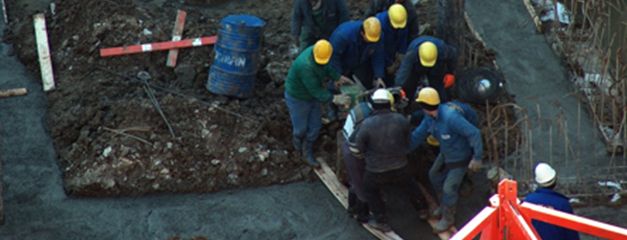Contaminated land liability for groundwater contamination can often exceed several £million.
With over 300,000 former industrial use sites in England, every property transaction requires the appropriate searches, investigations and contractual protections. In many cases, environmental insurance provides the best solution to protect clients from these significant costs.
To advise on bespoke layers of protection for buyers, sellers, landlords and tenants, the first step to understand the UK environmental liability regimes that can be applied at contaminated sites.
Part 2A Contaminated Land Regime
Local authority Contaminated Land Officers have a legal duty to identify “contaminated land” and secure remediation under Part 2A of the Environmental Protection Act 1990.
Responsibility for clean-up works rests in the first instance with any Class A appropriate persons that can be found -“causers” or “knowing permitters”. It is possible to become a Class A “knowing permitter” by having a phase 2 environmental or geotechnical report.
If no Class A persons can be found, the innocent Class B owner or occupier will be liable. This can include lenders in possession.
There are complex exclusion provisions for transferring liability from one party to another.
• A seller will retain Class A liability after the sale unless the liability is legally transferred
• Statutory Exclusion Tests, Agreements on Liabilities and indemnities will not work in the event of insolvency or if there are flaws in the drafting.
Water pollution legislation
The Environment Agency has greater powers under water pollution legislation.
It is an offence under the Environmental Permitting Regulations 2010 to “cause or knowingly permit a water discharge activity or groundwater activity”.
The EA can also threaten to serve a Works Notice under the Water Resources Act 1991 to prevent or remediate surface water or groundwater pollution.
Liability will fall on persons who “caused” or “knowingly permitted” the pollutants to enter or to be present in controlled waters.
In the 1998 House of Lords Empress Car case a site owner was found guilty of “causing” water pollution when vandals opened the taps of an unsecured oil storage tank.
Environmental Damage Regulations
There is a legal duty under the Environmental Damage Regulations 2009 to immediately notify regulators and take remedial action if there is “environmental damage” to land, water or protected nature sites. The environmental damage must have been caused after March 2009.
The Environment Agency or local authority can serve a Prevention Notice if there is an “imminent threat” of environmental damage.
Planning regime
The National Planning Policy Framework sets out the planning policy to manage land contamination risks.
The Local Planning Authority can either use
• Planning conditions – site investigations, remediation and monitoring, or
• Planning obligations – to undertake works, restrict the development or pay the LPA.
The developer is responsible for ensuring that a development is safe and that the land is suitable for the use.
Civil liability
The greatest liability risks for contaminated land can result from common law claims. Civil liability may arise where contamination has caused harm to persons or property, for example, if contamination has migrated off-site to neighbouring properties.
In addition to nuisance and Rylands & Fletcher claims, the 2009 Corby toxic waste case introduced liability under negligence, public liability and breach of statutory duty.
Landlord and tenant claims
Leases can allocate responsibility for contaminated land through indemnities and tenant covenants, such as the obligation to comply with regulatory requirements. Disputes often arise over the ability of the landlord to undertake site investigations or the tenant covenant to deliver up the site in good condition.
Existing indemnities
Indemnities in corporate transactions, sale contracts, leases and development agreements create ongoing contractual liability risks if there has been no time limit.
Expert environmental law support is required to
• Assess the environmental liability risks
• Ensure that statutory exclusion tests and indemnities are correctly drafted
• Interpret the scope and limitations of existing indemnities
• Advise on environmental insurance policy wording
• Design the best environmental liability transfer package

